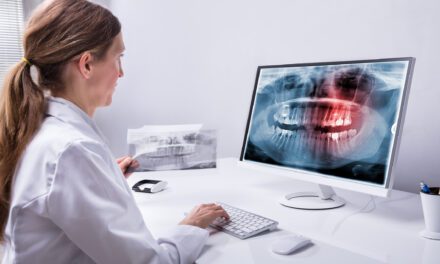SoftSmile has integrated CBCT analysis into its Vision treatment planning software, allowing orthodontists to further customize treatment plans.
SoftSmile announced the integration of Cone Beam Computed Tomography (CBCT) analysis in its treatment planning software, Vision. Orthodontists can now create customized treatment plans with the advanced visualization and manipulation of 3D CBCT imaging data of each patient’s unique anatomy.
What makes Vision’s CBCT offering unique is its AI-powered automation, making it faster and easier for orthodontists to make informed treatment decisions with the 3D imaging data. Vision’s AI is based on neural networks that are specifically trained to identify and segment various structures using a large data set of CBCT scans.
The neural networks improve efficiency by decreasing the time it takes to process data and its learning capabilities boost performance, reducing the need for manual input and adjustments. In addition, its ability to identify complex patterns ensures precise segmentation and analysis.
The integration of CBCT into Vision provides a range of benefits including:
- Customization: With the advanced visualization and analysis possible with Vision, practitioners can create highly tailored treatment plans for an individual’s specific anatomical features, extracted from CBCT images.
- Precise Diagnosis: CBCT images provide highly detailed and accurate information about the patient’s teeth and jaw structures with multiple layers of data to be analyzed, improving patient outcomes.
- Better Visuals: The highly detailed visuals surpass the capabilities of traditional two-dimensional CT scans, helping orthodontists avoid errors and improve accuracy.
- Better Treatment: CBCT images enable orthodontists to better understand their patients’ unique craniofacial structure, including tooth roots, bone structures, and soft tissues, empowering them to create more accurate and bespoke treatment plans, with smart collision and boundary control capabilities.
- Improved Patient Communication: CBCT visualizations are extremely high-quality and easy to understand. This helps orthodontists better communicate with patients.
“SoftSmile has been developing its CBCT capabilities since its inception, leveraging years of expertise working with CBCT scans for advanced jaw and bone analysis. And now with the innovation that CBCT brings to orthodontic diagnostics, SoftSmile is answering the call by delivering superior imaging and analysis that will significantly improve the precision, efficiency, and effectiveness of orthodontic treatment planning and evaluation,” said Khamzat Asabaev, Founder and CEO at SoftSmile.
In addition, this new integration adds to the visuals Vision provides, offering orthodontists improved graphics that help to improve treatment results.









